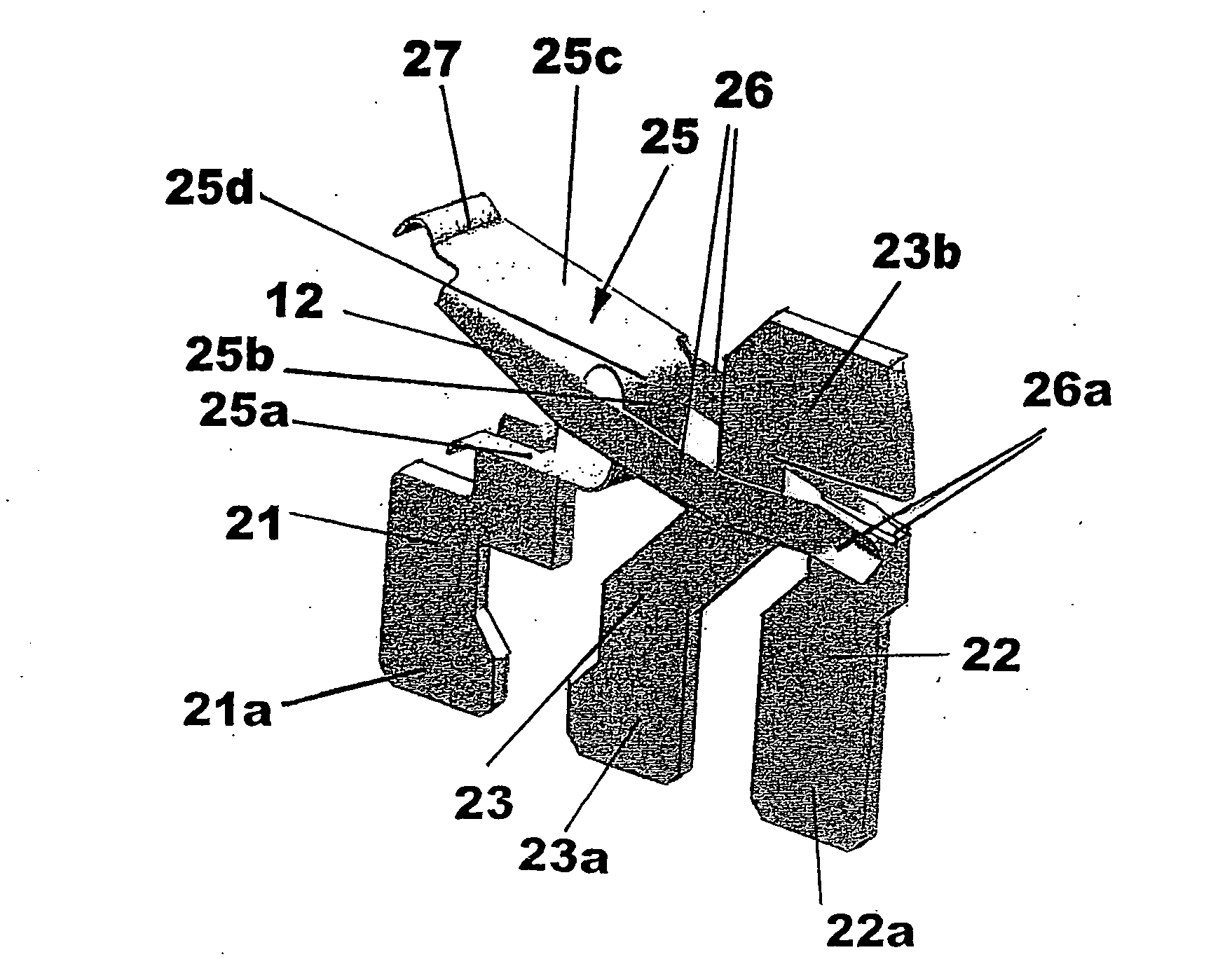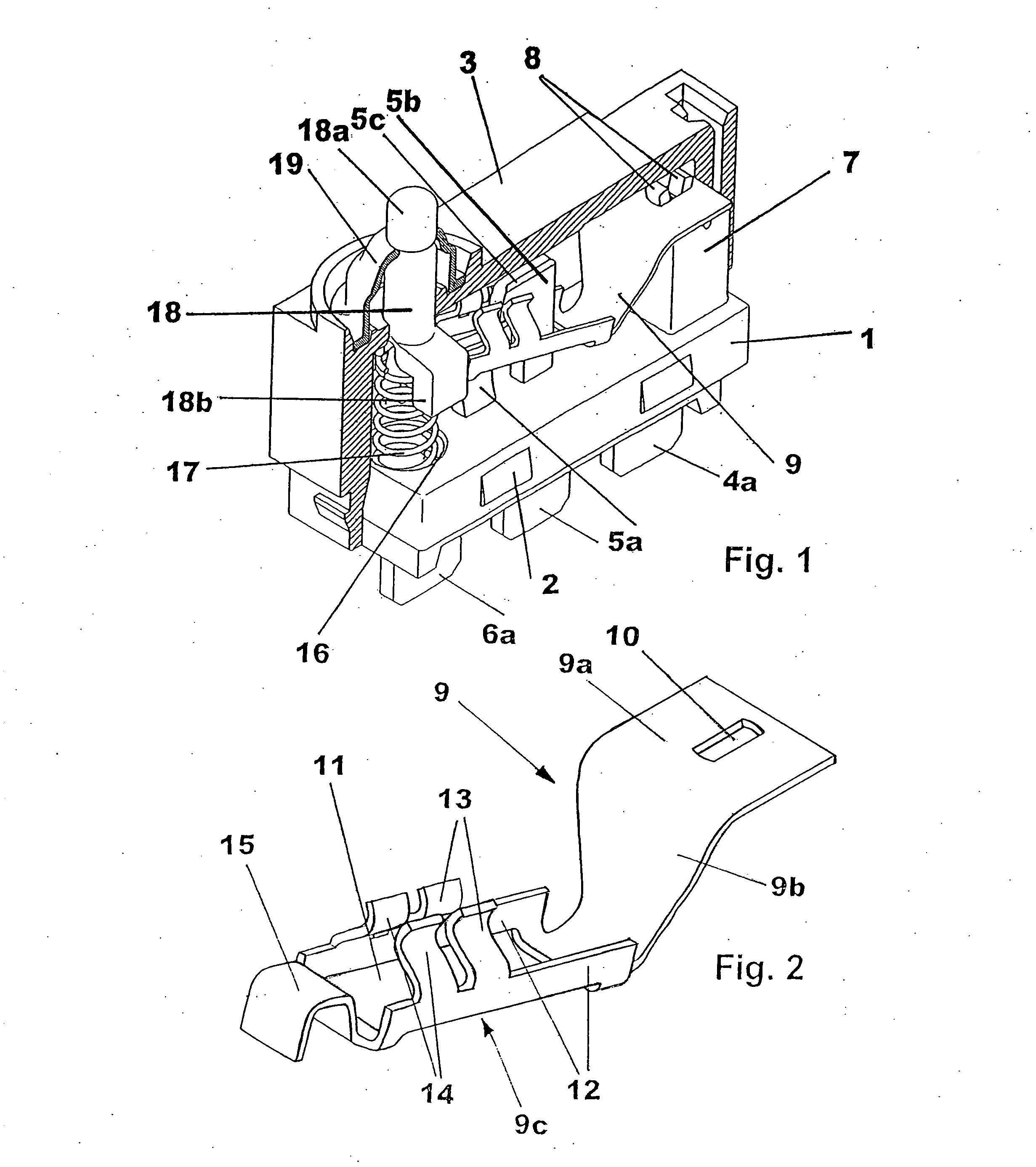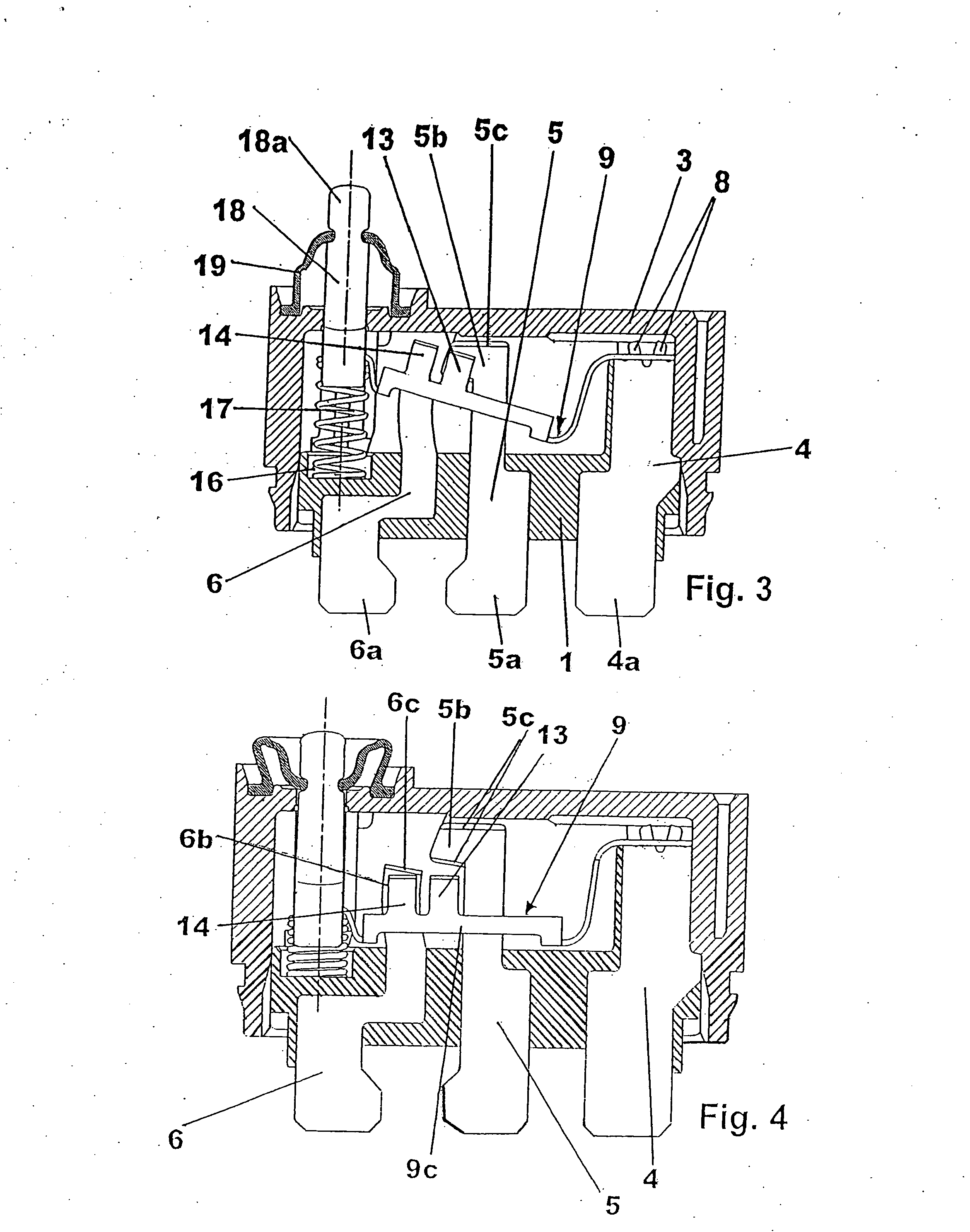Electric switch
a technology of electric switch and switch body, which is applied in the direction of contact mechanism, electrical apparatus, contact, etc., can solve the problems of inability to produce reliable electrical contact and current-conducting connection
- Summary
- Abstract
- Description
- Claims
- Application Information
AI Technical Summary
Benefits of technology
Problems solved by technology
Method used
Image
Examples
first embodiment
[0030]FIGS. 1 through 4 depict the electrical switch in accordance with the invention. The switch has a housing comprising a base 1 that has fastening projections 2 for fastening a cover 3. Set in the insulating material of the base 1 are three contact bodies, specifically a common contact body 4, a first selective contact body 5, and a second selective contact body 6. The contact bodies 4, 5, and 6 have a flat plate-like configuration and have different contours (see FIGS. 3 and 4).
[0031] A connector contact 4a is embodied at the bottom of the common contact body 4, likewise a connector contact 5a is embodied at the bottom of the first selective contact body 5 and a connector contact 6a is embodied at the bottom of the second selective contact body 6. The function of the switch is to connect in an electrically conducting manner either to the connector contact 5a or to the connector contact 6a depending on the switching position of the connector contact 4a.
[0032] A contactor 9 made...
third embodiment
[0044]FIGS. 9 through 11 depict the inventive the electrical switch. Essential parts thereof have already been described using FIGS. 1 through 4 and are labeled with the same reference numbers. In this case, as well, there is a common contact body 31 having a connector contact 31a as well as first and second selective contact bodies 32, 33 with connector contacts 32a and 33a. Anchoring apertures are labeled 31b and 33c, and these are used to fasten the common contact body 31 and the second contact body 33 to the insulating material of the base 1. In contrast to the exemplary embodiments already described, the first and second contact bodies 32 and 33 no longer retain the continuous flat, plate-like shape. On the contrary, the areas of the two selective contact bodies 32, 33 that form the contact surfaces 32b and 33b are bent outward approximately 90° out of the basic flat shape of the selective contact body; thus they run transverse to the longitudinal orientation of the contactor 3...
PUM
 Login to View More
Login to View More Abstract
Description
Claims
Application Information
 Login to View More
Login to View More - R&D
- Intellectual Property
- Life Sciences
- Materials
- Tech Scout
- Unparalleled Data Quality
- Higher Quality Content
- 60% Fewer Hallucinations
Browse by: Latest US Patents, China's latest patents, Technical Efficacy Thesaurus, Application Domain, Technology Topic, Popular Technical Reports.
© 2025 PatSnap. All rights reserved.Legal|Privacy policy|Modern Slavery Act Transparency Statement|Sitemap|About US| Contact US: help@patsnap.com



